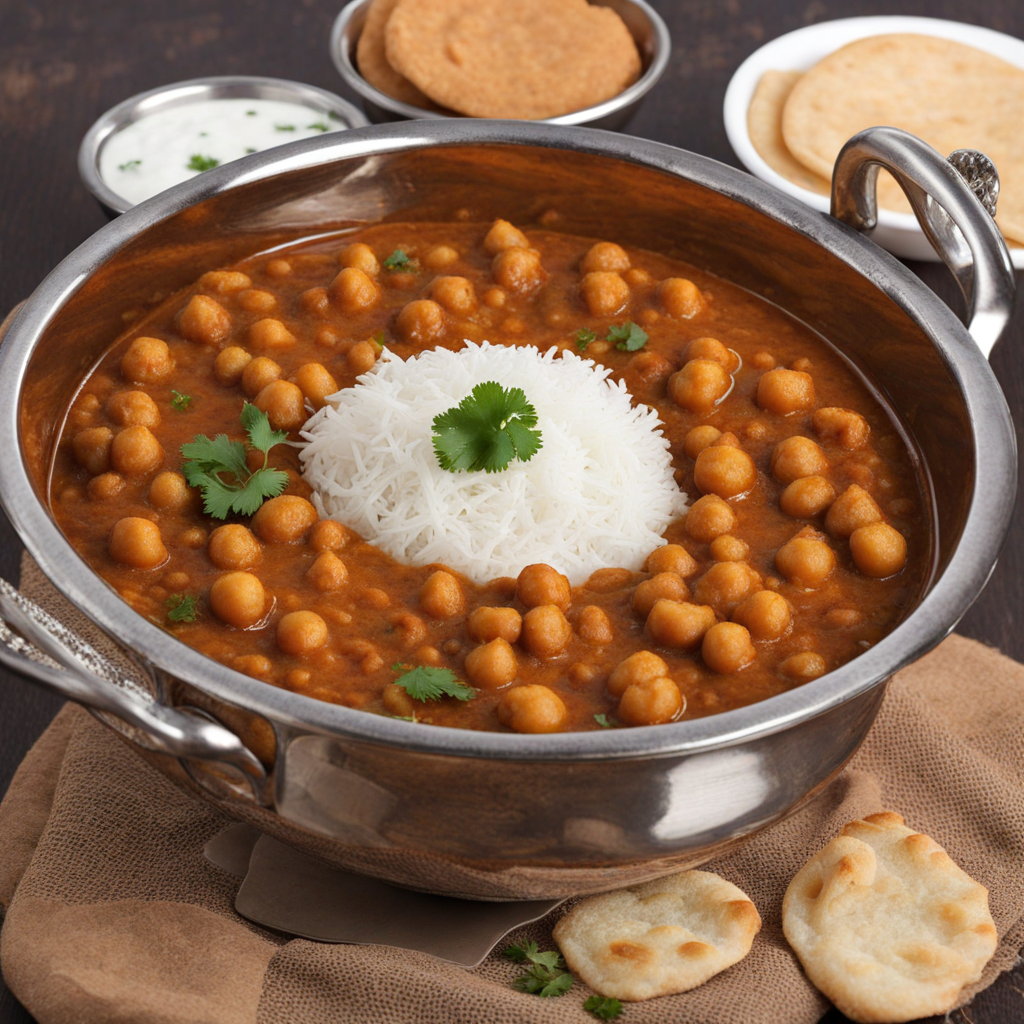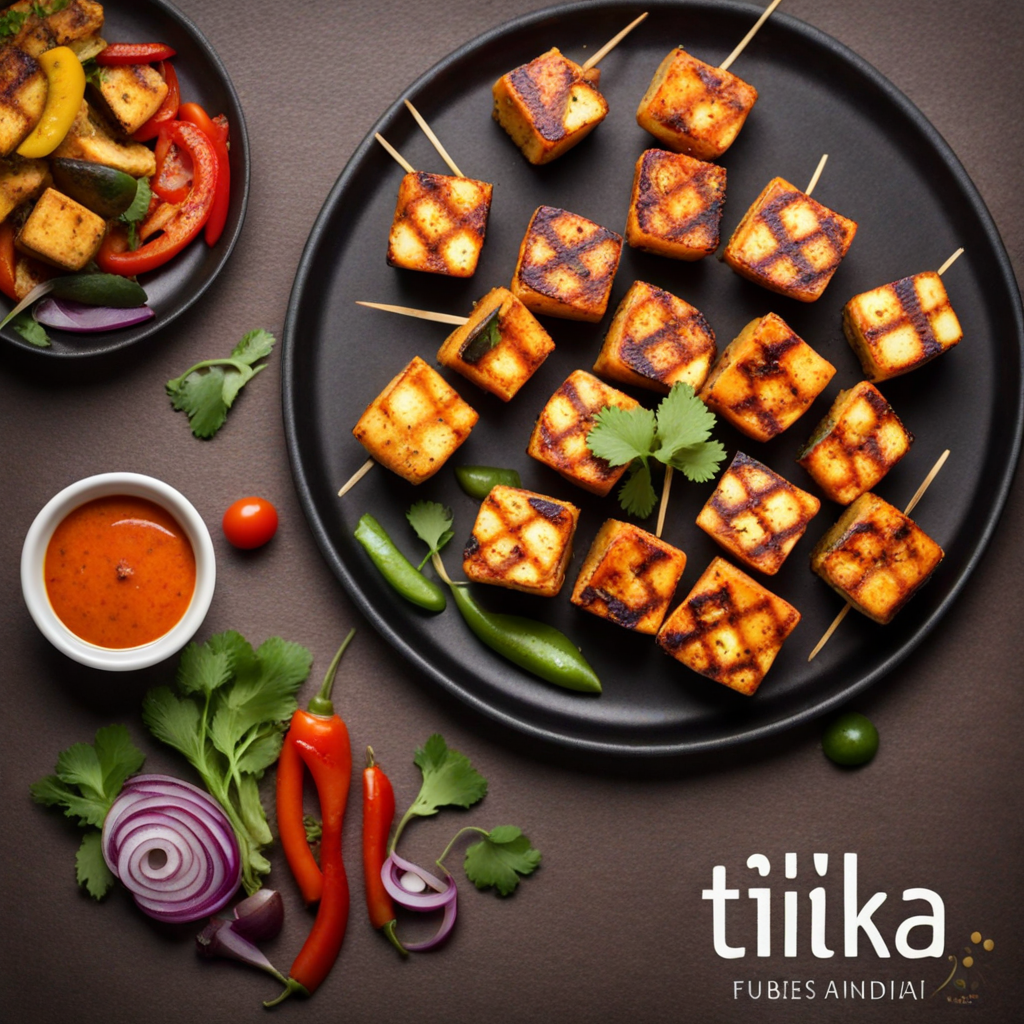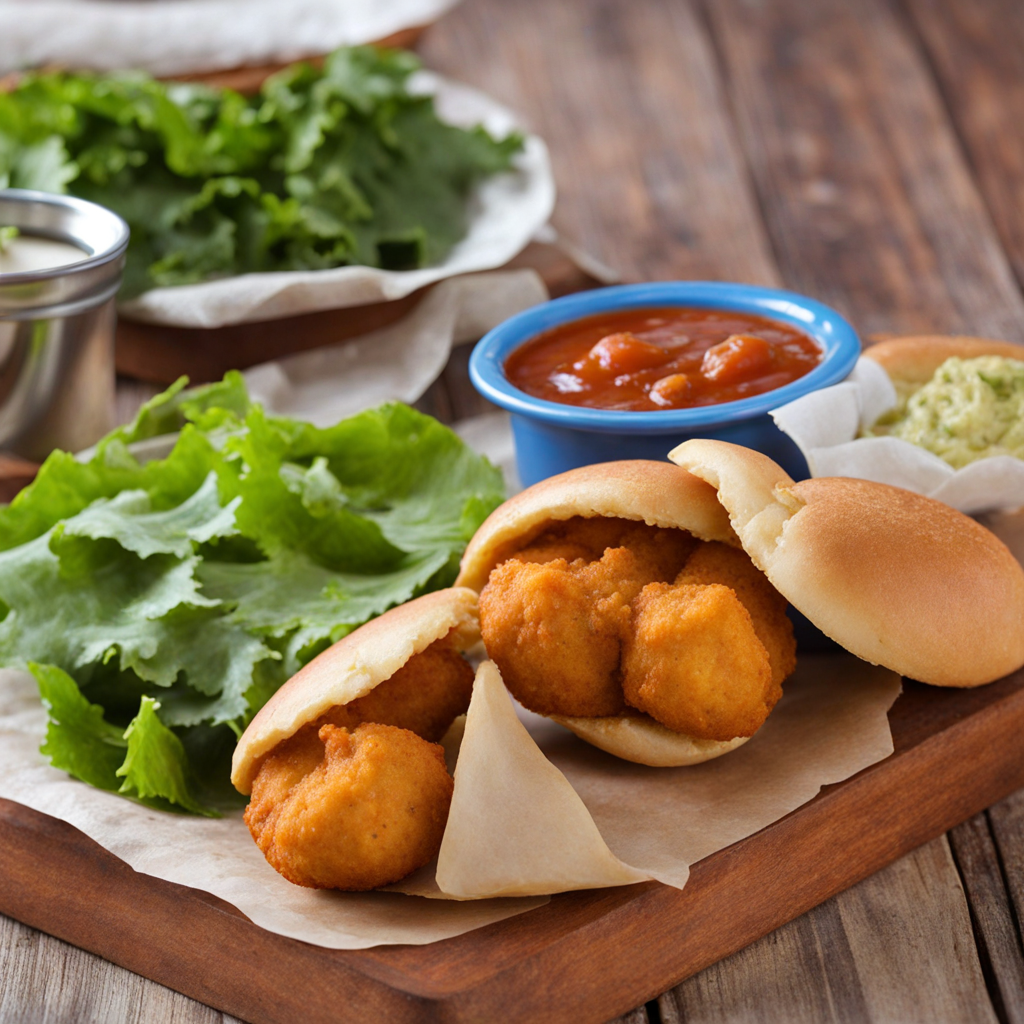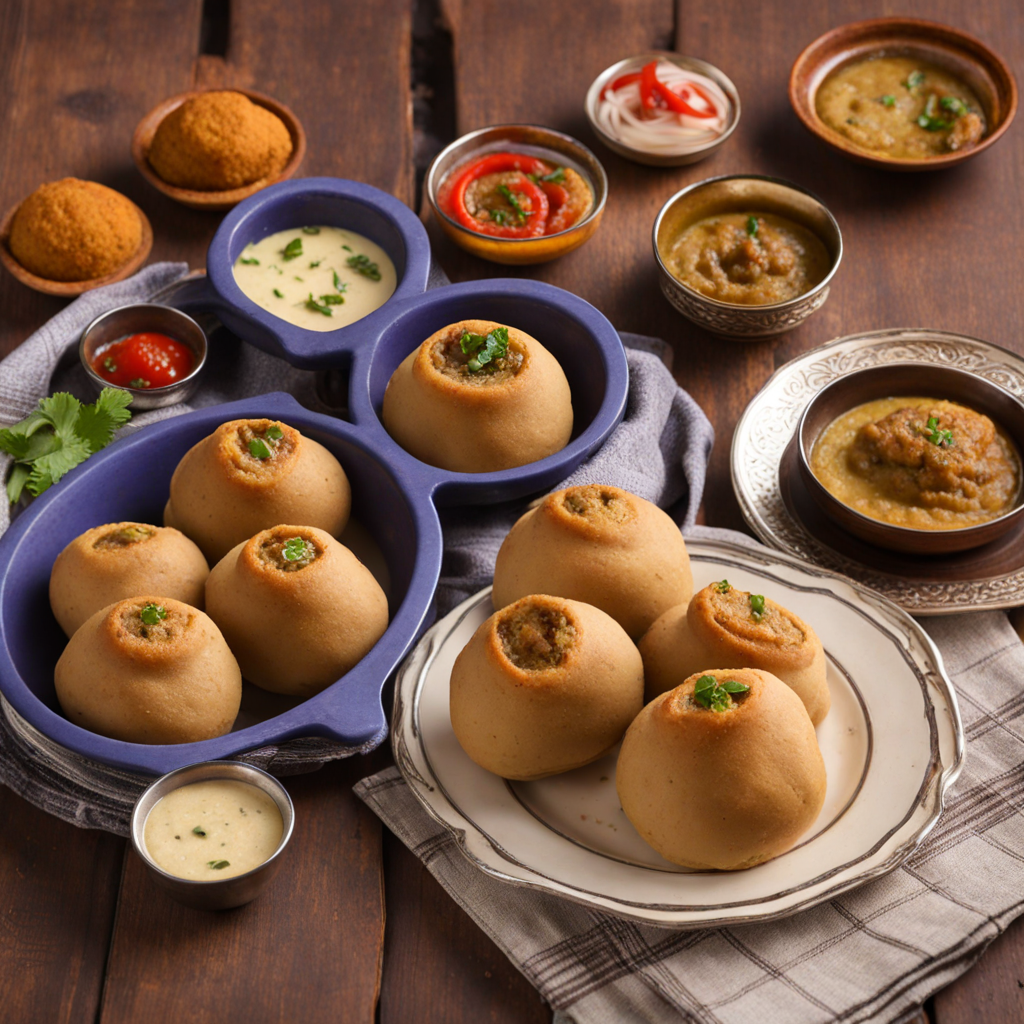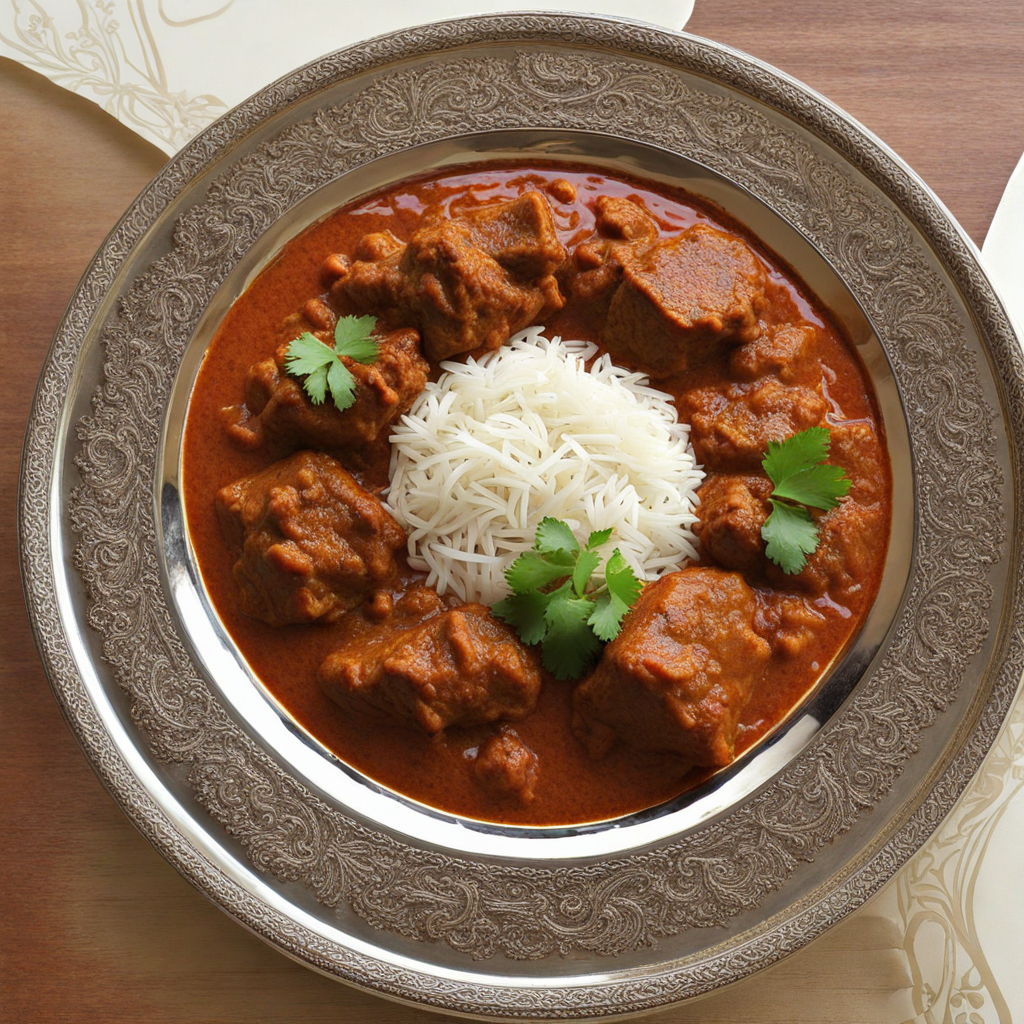Chole Bhature
Chole Bhature is a quintessential North Indian dish that tantalizes the taste buds with its robust and vibrant flavors. The dish consists of Chole, which are spicy chickpeas cooked in a rich, aromatic gravy infused with a blend of spices such as cumin, coriander, and garam masala. The chickpeas are simmered until tender, allowing the spices to meld beautifully, creating a comforting and hearty experience. Each bite of the Chole is a burst of flavor, accentuated by the tanginess of tomatoes and the freshness of chopped coriander, making it a delightful accompaniment to the fluffy bread known as Bhature. Bhature, the star of the dish, is a deep-fried bread that is soft, pillowy, and slightly crispy on the outside. Made from a fermented dough of all-purpose flour, it is rolled into discs and deep-fried until golden brown. The slight chewiness and airy texture of Bhature perfectly complement the spicy Chole, making it an irresistible combination. When served together, the hot Bhature acts as a vessel for scooping up the chickpeas, creating a hands-on dining experience that is both satisfying and indulgent. This dish is often enjoyed as a hearty breakfast or a fulfilling lunch and is commonly garnished with sliced onions, green chilies, and a wedge of lime for an extra zing. It is frequently served with a side of pickles and yogurt, adding layers of flavor and texture to the meal. Chole Bhature not only offers a taste of traditional Indian cuisine but also embodies the communal spirit of Indian dining, where sharing food brings people together, making it a must-try for anyone looking to explore the rich tapestry of flavors that India has to offer.
How It Became This Dish
Origin of Chole Bhature Chole Bhature is a popular dish hailing from the northern regions of India, particularly associated with the state of Punjab. The dish consists of two main components: chole, which are spiced chickpeas, and bhature, which are deep-fried bread made from fermented dough. The origins of this dish can be traced back to the Punjabi cuisine, which has long been known for its hearty and flavorful food. While the exact timeline of its inception is difficult to pinpoint, the combination of chickpeas and bread has been a staple in Indian households for centuries. Chole, or chickpeas, are believed to have been cultivated in the Indian subcontinent as early as 3000 BCE. They are a significant source of protein, especially in vegetarian diets. The use of spices in preparing chole reflects the rich culinary traditions of India, with ingredients like cumin, coriander, and garam masala imparting a unique flavor profile. The bhature, on the other hand, is thought to have been influenced by the Mughal culinary traditions, which introduced various forms of bread, including deep-fried variations. This fusion of local and Mughal influences laid the groundwork for what would become the iconic Chole Bhature. \n\n Cultural Significance The cultural significance of Chole Bhature extends beyond just being a dish; it embodies the essence of Punjab's culinary heritage. It is widely recognized as a comfort food, often enjoyed during family gatherings, festivals, and celebrations. In Punjab, Chole Bhature is a common breakfast item, often paired with pickles, onions, and yogurt, making it a complete meal. It is also a popular street food, and vendors selling this dish can be found in bustling markets and busy streets across northern India. The dish has gained immense popularity not just within India but also among the Indian diaspora worldwide. It serves as a culinary bridge connecting people to their roots, reminding them of home and traditional flavors. Festivals and occasions such as Baisakhi, which celebrates the harvest, often feature Chole Bhature as a festive dish, showcasing its importance in Punjabi culture. The dish has also found its way into various restaurants and eateries, further cementing its status as a beloved staple in Indian cuisine. \n\n Development Over Time Over the years, Chole Bhature has evolved, with various regional adaptations and influences shaping its preparation and presentation. In the initial stages, the dish was primarily prepared in homes using traditional methods. However, with the advent of modern culinary practices, the preparation of Chole Bhature has seen significant changes. The bhature, once made with plain flour, is now often prepared with a mix of flours such as semolina or whole wheat to cater to health-conscious consumers. The use of different spices and ingredients has also expanded. While traditional recipes use a standard mix of spices, many contemporary versions experiment with innovative flavor profiles to create unique takes on this classic dish. Various regional versions of Chole Bhature have emerged, including those from Delhi, where it is served with a side of sweet and tangy chutney, and from Amritsar, known for its rich and flavorful chole, often accompanied by a dollop of butter. \n\n Global Popularity In recent years, Chole Bhature has gained international recognition, thanks in part to the global spread of Indian cuisine. Indian restaurants around the world have embraced this dish, introducing it to diverse audiences who may not be familiar with traditional Indian fare. The dish's adaptability has allowed it to be served in various formats, including as a platter or as part of a thali, where it is accompanied by an assortment of other Indian dishes. Moreover, the rise of food blogs and social media has played a significant role in promoting Chole Bhature among food enthusiasts worldwide. Home cooks and chefs alike share their unique recipes, variations, and plating styles, contributing to the dish's popularity and making it a subject of culinary exploration. Food festivals and cultural events often feature Chole Bhature, further showcasing its versatility and appeal across different demographics. \n\n Chole Bhature in Contemporary Cuisine As culinary trends continue to evolve, Chole Bhature has found its place in contemporary cuisine, often being reimagined by chefs who seek to combine traditional flavors with modern techniques. Fusion dishes, such as Chole Bhature tacos or chaat-style presentations, have emerged, reflecting the creativity of chefs who strive to reinvent classic recipes while honoring their roots. The rise of vegetarianism and veganism has also influenced the way Chole Bhature is prepared and served. Many restaurants now offer plant-based versions of the dish, catering to the growing demand for meat-free options. Additionally, gluten-free bhature made from alternative flours, such as chickpea flour, have become popular among those with dietary restrictions. \n\n Conclusion Chole Bhature stands as a testament to the rich culinary tapestry of India, embodying the fusion of regional and cultural influences that have shaped its identity over centuries. From its humble beginnings in Punjabi kitchens to its status as a global favorite, the dish continues to evolve while retaining its traditional roots. As generations pass and culinary traditions are passed down, Chole Bhature remains a cherished dish that connects people to their heritage and celebrates the vibrant flavors of Indian cuisine.
You may like
Discover local flavors from India


